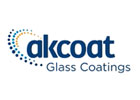The first images from the Daniel K. Inouye Solar Telescope (DKIST) of the National Science Foundation (NSF) were published end of January: They show unprecedented details of the sun’s surface and offer a preview of the outstanding results that are expected from this 4-meter solar telescope.
This imaging quality is made possible by a monolithic 4.26-meter mirror made of the glass-ceramic ZERODUR®.
The huge mirror diameter and the extraordinary material properties make it possible to observe structures on the sun that are 25 kilometers in size, although the sun is almost 150 million kilometers away. This equates to observing a pea from a distance of 30 kilometers. The resolving power is thus 2.6 times higher than that of the largest solar telescope to date, the Big Bear Solar Observatory near Los Angeles, which also uses a primary mirror made of ZERODUR®.
“To manufacture a mirror substrate to the required specifications was clearly a major technological challenge. SCHOTT was the perfect partner for our project and did a great job,” said DKIST Project Manager Joseph McMullin. Advanced Optics delivered the ZERODUR® disc for the primary mirror to the polisher, the Optical Science Center of the University of Arizona in Tucson, already back in 2014.
The NSF’s Inouye Solar Telescope, which is located on the 3,000-meter-high Mount Haleakala on the Hawaiian island of Maui, is expected to usher in a new era of solar research and enables a leap forward in our understanding of the sun and its impact on our planet. The National Solar Observatory (NSO) is responsible for the research. It is operated by the US umbrella organization AURA (Association of Universities for Research in Astronomy Inc.) and is supported by 22 research institutions from several countries.
In numerous superlative telescope projects – like the ESO Very Large Telescope (VLT), the Gran Telescopio Canarias (GTC), the Keck Telescopes on Hawaii or the flying NASA telescope Sofia – the glass-ceramic ZERODUR® has been the gold standard for mirror substrates due to its thermal expansion coefficient close to zero. The material was developed by SCHOTT in Mainz more than 50 years ago. It enables extreme shape accuracy and ensures sharp images from space. SCHOTT is currently manufacturing the mirror substrate components for the Extremely Large Telescope (ELT) of the ESO (European Southern Observatory), with a primary mirror of 39 m in diameter the largest eye of mankind in the future. SCHOTT has already delivered segments for the fourth mirror of the telescope optics as well as two mirror substrates in the 4-m class for the secondary and tertiary mirrors of the ELT. The company is now starting a series production of more than 900 mirror substrates for the segmented primary mirror. First Light of the ELT on the Chilean Cerro Armazones is scheduled for 2025.
SCHOTT is a leading international technology group in the areas of specialty glass, glass-ceramics and related high-tech materials. With over 130 years of experience, the company is an innovative partner to many industries, including the home appliance, pharma, electronics, optics, life sciences, automotive and aviation industries. SCHOTT has a global presence with production sites and sales offices in 34 countries. In the 2018/2019 fiscal year, the group generated sales of EUR 2.2 billion with over 16,200 employees.
SCHOTT AG has its headquarters in Mainz (Germany) and is solely owned by the Carl Zeiss Foundation. This is one of the oldest private and largest science-promoting foundations in Germany. As a foundation company, SCHOTT assumes special responsibility for its employees, society and the environment.



























